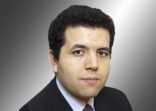The overall environment is supportive for US stocks because economic growth is forecast to be better next year than in 2014, inflation and interest rates are expected to remain low, and 2015 corporate earnings growth is forecast to continue at 7-8%, said Camp.
When corporate earnings growth is 7-8% or higher, that creates a supportive environment for stocks, he added.
“The US economy seems to be overall on the mend, whereas in most parts of the world, the picture is bleaker.
According to Camp, he’s talked to multiple investors and clients in Asia and they tend to be overweight US equities compared to their usual allocations. “There is a bias in favour of the US.
“Since the beginning of the year until now, US equities have done much better than Europe. The whole European story has not played out. The cyclical rebound has really not happened. If anything, Europe is flattening and growth is decelerating in some of the big emerging market countries.
“The US still looks like the best house in the town.”
Camp’s view runs in contrast to those of BlackRock’s head of Asian equities Andrew Swan, who forecast strong returns from some regional markets next year.
Camp said that Asian investors generally tend to have a preference for large-caps, which seem to be better valued than small-caps. However, he cautioned that investors should temper return expectations following the sharp rise in the S&P 500 index.
“It would be a mistake to believe that you will have a year like 2013 when the S&P 500 was up 32% in total return terms and it is very unlikely you will see a repeat of last year’s performance in the current market cycle.”
Tristan expects returns to be in “high single digit”, but with higher market volatility.
US aggressive growth
The firm has seen a spike in the size of its Dublin-based fund, Legg Mason Clear Bridge US Aggressive Growth, which invests in US markets.
The fund typically follows a concentrated portfolio strategy holding in about 50-80 companies and has grown in size to $3.7bn as of 31 October from $200m in 2012.

The cash component in the portfolio (11.5%) is high due to inflows compared to 3-5% maintained during normal market conditions.
The portfolio manager tends to have a very long holding period, Camp said, adding that some of the names that feature in the top ten in the portfolio have been there for 18 years.
The idea is to start building positions in companies that are mid-cap and have a potential to become large-caps, he added.
As of October-end, the fund, which invests in companies across all market caps, had 67 holdings in the portfolio with the top 10 companies together constituting 48.4% of the portfolio.
In terms of sectoral allocation, the fund is overweight on healthcare and energy companies, which have a 32.4% and 13% weighting, respectively.
This compares with the healthcare and energy sectors having a 15% and 5.2% weighting, repsectively, in the Russell 3000 Growth Index, which is the fund’s benchmark index.
Return to Asia?
US and European equities will remain a favourite theme going forward, according to Clement Lee, the firm’s director of business development for Singapore and Southeast Asia.
“In terms of Asian equities, we have not seen much interest in terms of inflows in the last six months. A lot of flows are still toward fixed income as well as US and European equities,” Lee said.
“Some Asian investors are looking to reallocate back to Asia, [but] possibly in the second quarter of 2015,” he said.
He said not many gatekeepers are showing interest in Asian products.
“Right now all of their focus is on the fixed income space as investors are still hungry for yield and high yield products. This theme will possibly continue until the first quarter of the year. Depending upon how markets perform in the second quarter, some of the gatekeepers will explore Asian ideas.”















